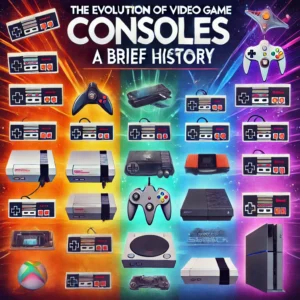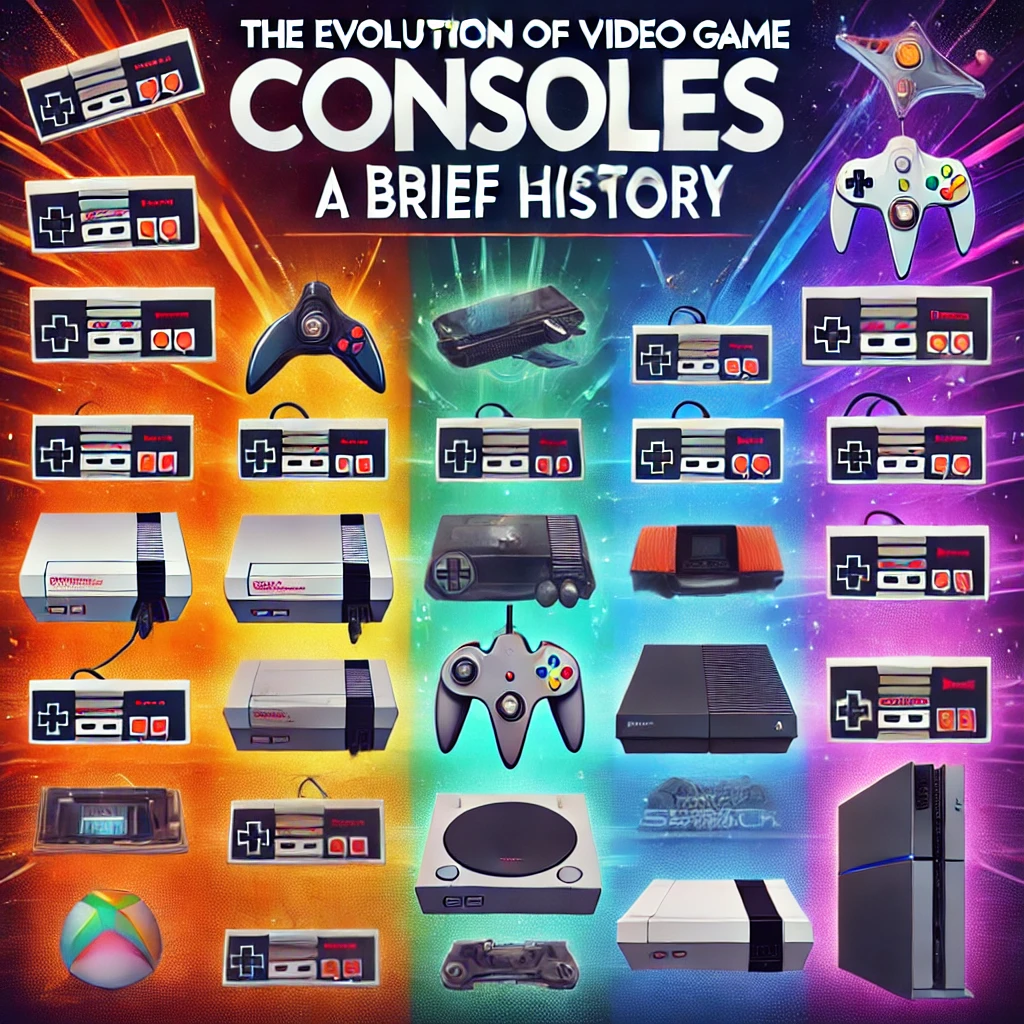
### The Evolution of Video Game Consoles: A Brief History
The Birth of Home Gaming: 1970s
The history of video game consoles dates back to the early 1970s with the launch of the Magnavox Odyssey in 1972. Often regarded as the first home video game console, the Odyssey was a revolutionary device that allowed users to play simple games on their home television sets. It laid the foundation for what would become a massive industry. Around the same time, Atari released Pong, an arcade game that soon became a household name when it was adapted for home consoles. These early consoles were rudimentary, offering basic graphics and limited gameplay, but they sparked the imagination of both developers and players.
#### The Rise of the 8-Bit Era: 1980s
The 1980s saw the rise of the 8-bit consoles, with the Nintendo Entertainment System (NES) leading the charge. Launched in 1983, the NES revitalized the video game industry after the crash of 1983, which was caused by market saturation and poor-quality games. The NES brought iconic titles like Super Mario Bros., The Legend of Zelda, and Metroid, establishing Nintendo as a dominant force in the gaming world. Sega also entered the fray with the Sega Master System, but it was the NES that defined the 8-bit era, setting standards for game design and console manufacturing.
#### The Battle for Dominance: 1990s
The 1990s were marked by the intense competition between Nintendo and Sega. The release of the 16-bit consoles, the Super Nintendo Entertainment System (SNES) and the Sega Genesis, pushed the boundaries of what video games could achieve in terms of graphics, sound, and gameplay. Iconic franchises like Sonic the Hedgehog and Street Fighter II emerged during this era. Meanwhile, Sony entered the market with the PlayStation in 1994, introducing 3D graphics and CD-based games, which revolutionized the gaming industry. By the end of the decade, the PlayStation had overtaken its competitors, selling over 100 million units.
#### The Modern Era: 2000s to Present
The 2000s and beyond have seen the emergence of high-definition gaming and online multiplayer experiences. Consoles like the PlayStation 2, Xbox, and Nintendo GameCube introduced gamers to a new level of realism and interactivity. The PlayStation 2 became the best-selling console of all time, while Microsoft’s Xbox and Xbox 360 gained a strong foothold with the success of titles like Halo. The current generation of consoles, including the PlayStation 5, Xbox Series X, and the Nintendo Switch, continues to push the envelope with 4K graphics, virtual reality support, and cloud gaming, shaping the future of the industry.
The history of video game consoles is a testament to innovation and the relentless pursuit of better gaming experiences. From the simple graphics of the 1970s to the immersive worlds of today, consoles have evolved dramatically, offering players endless possibilities and entertainment.

